Cannibalism seems like something that’s typically a concept in movies. But, it’s more common in the animal kingdom than you’d think. This article will explore filial cannibalism within various animal species.
What are the animals that eat their young? Filial cannibalism is quite common in the animal kingdom. For your quick reference, here are 15 animals that eat their young:
- Chickens
- Rattlesnakes
- Blennies
- Sand Tiger Shark
- Scorpions
- Hamsters
- Rabbits
- Dog
- Lions
- Blenny Fish
- Rats
- Chimpanzees
- Cats
- Polar Bear
- Prairie Dog
From the above enumeration, it is easy to see that filial cannibalism is practiced by a wide variety of animals, ranging from mammals to reptiles and even fish species. And in this article, you’ll get to know more about them.
Table of Contents
Why Do Some Animals Eat Their Own Babies?
Research suggests that some animals eat their babies as a way to recuperate after giving birth. But even then, they often prey on babies that seem too weak or sick to survive on their own. Also, it has been observed that some animal species only eat the young that have already died.
15 Animals That Eat Their Young
Chickens

It may come as a surprise, but chickens are among the animals known to eat their young. While hens are known for their maternal instincts, there are instances when they peck on their eggs and eat them. This usually happens when hens experience a nutritional deficiency, and the protein-rich egg is an easily-accessible source of nutrients.
- Scientific Name: Gallus gallus domesticus
- Appearance: Chickens have rounded bodies covered in thick plumage, usually of white or black feathers. They stand on a pair of short and narrow legs. They have a hard bill, as well as a fleshy comb and wattle, which may be of different shapes and sizes depending on the breed.
- Color: White, black, brown, tan, grey, white and black, white and grey
- Lifespan: 5 to 10 years
- Habitat: Tropical jungle, forests, domesticated farms
- Height: 15 to 27 inches
- Weight: 5 to 12 pounds
- Diet: Cereal, fruits, vegetables, small insects
- Place Of Origin: Southeast Asia
- Characteristics: Non-migratory, biped, easy to domesticate, territorial
Rattlesnakes

Rattlesnakes developed a bad reputation for being aggressive and venomous. So, it may not come as a surprise that they are among the animals that eat their young.
Interestingly, a study reveals that this snake species is capable of distinguishing between alive and dead offspring. Once the female rattlesnake identifies a dead offspring, that’s the only time she consumes it. The reason behind this is that the female needs food to recover after giving birth, and the dead offspring is what’s readily available.
- Scientific Name: Crotalus
- Appearance: The rattlesnake’s most noticeable feature is the tip of its tail which gives off a rattle-like buzzing sound – hence its name. It has a triangular head and a long body covered in scales with diamond-shaped patterns.
- Color: Brown, gray, black, white, green, yellow, and red
- Lifespan: 10 to 25 years
- Habitat: Forest, grasslands, swamps, and deserts
- Height: Up to 8.2 feet
- Weight: 3 to 6 pounds
- Diet: Amphibians, insects, reptiles, and birds
- Place Of Origin: North America, South America
- Characteristics: Venomous, reptile, aggressive
Blennies
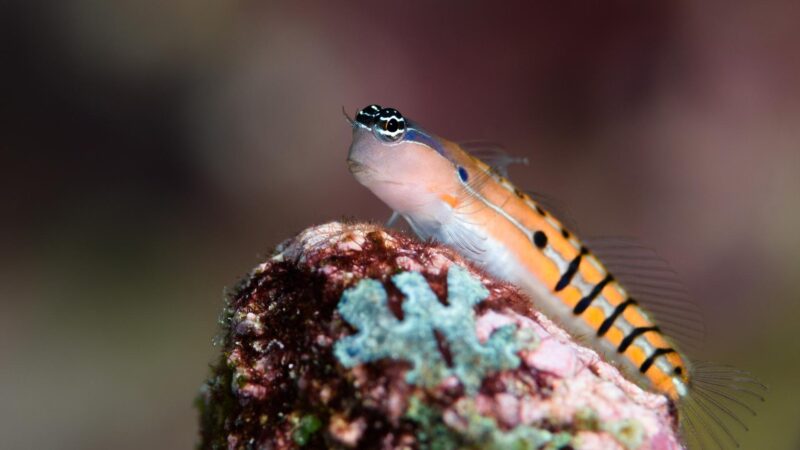
Within fish species, blennies are best known for consuming their eggs or newly-hatched babies. Particularly, the male blennies would consume all of its offspring – especially if he feels that the number is small enough for him to be guarding over.
Interestingly, eating his offspring allows the male blenny to restart the courting process. He no longer has eggs to watch over, so he’s free to look for another mate who can give birth to more – and perhaps healthier – eggs.
- Scientific Name: Blenniiformes
- Appearance: Blennies are a small breed of fish with long yet slender bodies, giving them an eel-like appearance. They have a pair of large eyes and a big mouth, which is highlighted by their tiny bodies. They also have multiple dorsal fins located throughout the length of their bodies.
- Color: Blue, brown, and orange
- Lifespan: 7 to 8 years
- Habitat: Tropical waters
- Height: Up to 3 inches
- Weight: 0.00832 ounces
- Diet: Algae
- Place Of Origin: Northern Africa, Southern Europe
- Characteristics: Long-bodied, alert, low maintenance
Sand Tiger Shark

Of all the animals on this list, the sand tiger shark’s cannibalism is unique. Instead of the mother or the father shark eating the young, it’s the young eating its siblings – and it all takes place inside the mother’s womb.
This practice is called intrauterine cannibalism and is quite common among sand tiger shark species. Experts suggest that the stronger baby sand tiger shark preys on its weaker siblings to obtain nutrients, while inside the embryo. As a result, only the toughest and most developed baby sharks are born.
- Scientific Name: Carcharias taurus
- Appearance: Sand tiger sharks are distinguishable from most sharks because of the brownish or rust-colored spots on top of their bodies. They have long muscular bodies with a flat yet cone-shaped snout. The dorsal and anal fins on the tiger shark are of the same size.
- Color: Brown rusted-gray
- Lifespan: 15 to 40 years
- Habitat: Coastal waters, shallow bays, and tropical reefs
- Height: 7 to 9.8 feet
- Weight: Up to 191 pounds
- Diet: Large and small fish as well as squids and crustaceans
- Place Of Origin: Atlantic, Pacific, and Indian Oceans. They can also be found on the Adriatic Seas.
- Characteristics: Nocturnal, migratory, slow swimmer
Scorpions
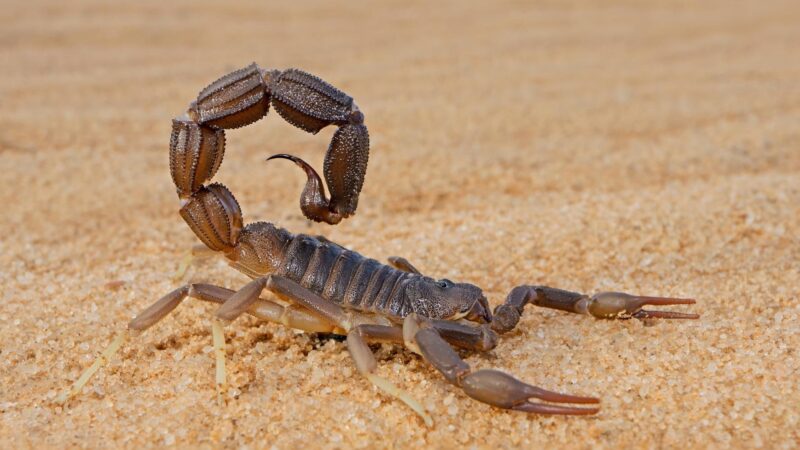
The thought of scorpions is often hair-raising, especially since a single sting is enough to kill its enemy. Also, these predatory insects are carnivorous, which is why it may not be surprising that they sometimes eat their young.
Nevertheless, study shows that the mother scorpion only resorts to eating its offspring when there is no available food nearby. Fortunately for baby scorpions, this is quite rare and only happens as a last resort.
- Scientific Name: Scorpiones
- Appearance: A scorpion has a long and slender body supported by 4 pairs of legs. Its notable features include a pair of claws and a stinger-tipped tail that curls upwards.
- Color: Yellow, black, brown, red, and orange.
- Lifespan: 2 to 6 years
- Habitat: Usually found in deserts but can also be found in tropical rainforests and grasslands
- Height: 2.5 to 8.3 inches
- Weight: 0.02 to 0.2 ounces
- Diet: Insects, spiders, and centipedes, as well as other scorpions
- Place Of Origin: Scotland
- Characteristics: Predatory, venomous
Hamsters
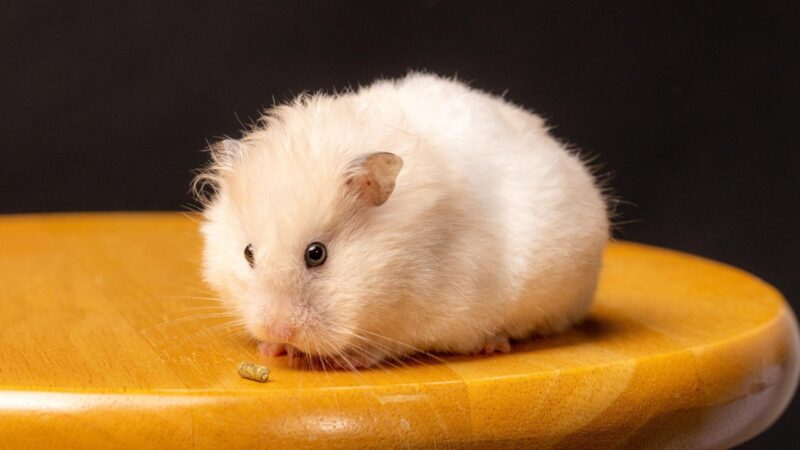
Surprisingly, hamsters are among the animals that eat their young. And unfortunately, there are several reasons why hamsters resort to filial cannibalism. That includes lack of food, stress, and an inability to care for their young.
Fortunately, for domesticated hamsters, you can prevent this from happening by making sure there’s always enough food to go around.
- Scientific Name: Cricetinae
- Appearance: Hamsters have small furry bodies supported by four stocky legs. As opposed to other rodents, hamsters have a notably wide set of feet. At the tip of their round bodies is a short furry tail. They have long faces with beady eyes and a pair of ears perched on top of their heads.
- Color: Black, gray, brown, white, yellow, and red
- Lifespan: 2 to 3 years
- Habitat: Dunes and deserts
- Height: 2 to 4 inches
- Weight: 3 to 5.2 ounces
- Diet: Fresh fruit, vegetables, or herbs
- Place Of Origin: Southeast Europe, Asia
- Characteristics: Docile, playful, crepuscular
Rabbits
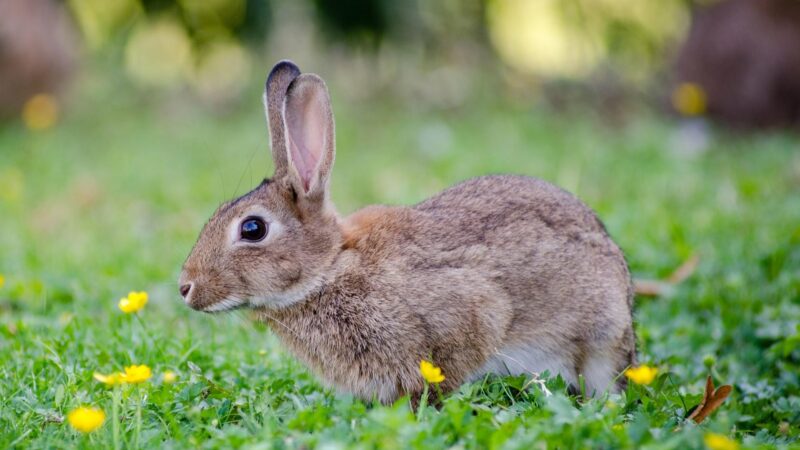
Rabbits are herbivores by nature, which is why it’s surprising to find them on this list. However, research shows that rabbits often resort to eating their young as a way to protect them. It is observed that mother rabbits only eat their young when, just after giving birth, they feel like a predator is nearby.
In some instances, it has also been observed that some rabbits resort to eating their young when they do not have access to water. So if you have pet rabbits, make sure there’s enough water around, especially if they have just given birth.
- Scientific Name: Oryctolagus cuniculus
- Appearance: Rabbits are small mammals with round bodies covered in fur. They have a pair of long ears and a short, fluffy tail. Rabbits have small forelegs and a pair of muscular hindlegs that allow them to hop from place to place.
- Color: Rabbits have multiple colors, but the most common are white, gray, black, and brown
- Lifespan: 5 to 8 years
- Habitat: Short grassy areas
- Height: 20 inches
- Weight: Up to 5 pounds
- Diet: Vegetables, hay, and pellets
- Place Of Origin: Southern Europe, North Africa
- Characteristics: Shy, curious, and high spirited
Dog
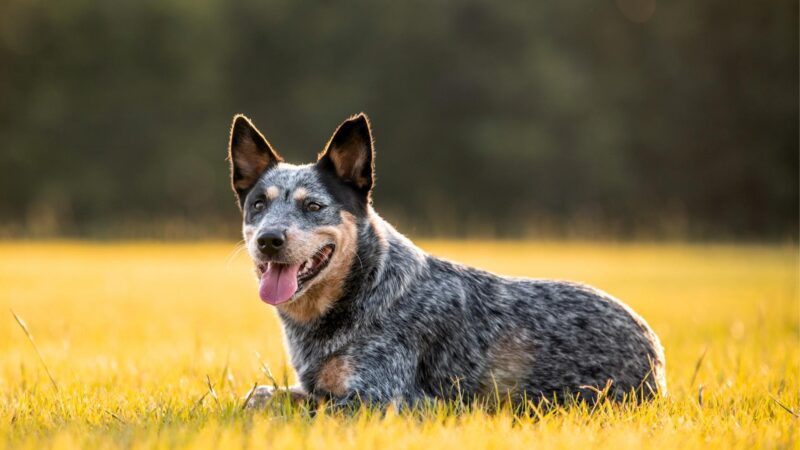
Another animal that’s known to eat their young is the dog. It has been observed that some mother dogs eat their babies as a result of their predatory instincts. It appears that some mother dogs may not easily recognize the newborn puppy as their own, so she attacks it to protect the others. Fortunately, this rarely happens since most dogs have excellent maternal instincts.
- Scientific Name: Canis lupus familiaris
- Appearance: Dogs are quadruped mammals with a pair of ears and eyes. Depending on the species, dogs may have long or short fur. Some dogs have notable undercoats, especially those that originate from cold areas.
- Color: Black, brown, white, and red
- Lifespan: 10 to 13 years
- Habitat: Prairies, deserts, grasslands, forests, coastal areas, and arctic zones.
- Height: 15 to 110 inches
- Weight: 12 to 150 pounds
- Diet: Domestic dogs prefer nutrients from grains, fruits, and vegetables
- Place Of Origin: Siberia
- Characteristics: Loyal, intelligent, friendly, territorial
Lions
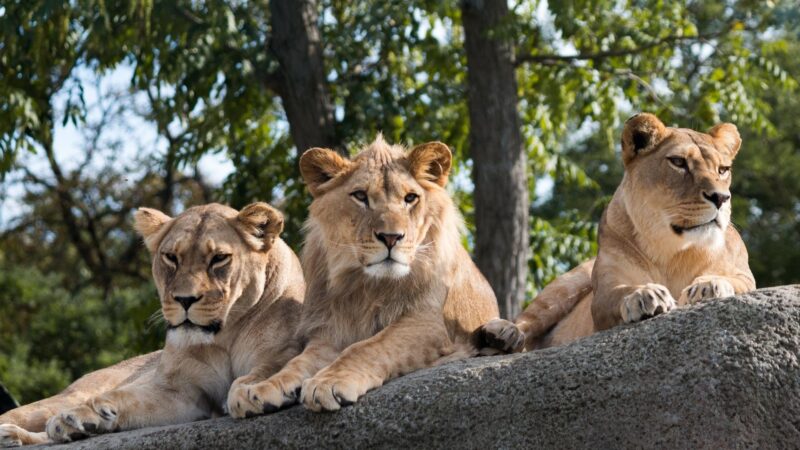
Lions are predatory and carnivorous mammals, and it may be expected of them to eat their young. However, it has been observed that mother lions only eat their offspring if they find it to be unhealthy or deformed. Either way, it will not be able to defend itself when it grows up.
In other instances, filial cannibalism is not observed. Instead, the mother lion simply abandons the unhealthy or deformed cub.
- Scientific Name: Panthera leo
- Appearance: Lions have muscular bodies supported by four legs and a long tail. Male lions are distinguishable from females because of their long and hairy mane that goes around its head. Female lions do not have such a mane. Regardless of gender, lions have large and powerful claws that come into play when attacking their prey.
- Color: Yellow-gold and reddish-brown
- Lifespan: 8 to 16 years
- Habitat: Desert forest
- Height: 3.9 to 6.5 feet
- Weight: 280 to 420 pounds
- Diet: Mammals, hoofed animals, meat
- Place Of Origin: Eastern and southern Africa
- Characteristics: Predatory, aggressive, intelligent
Blenny Fish
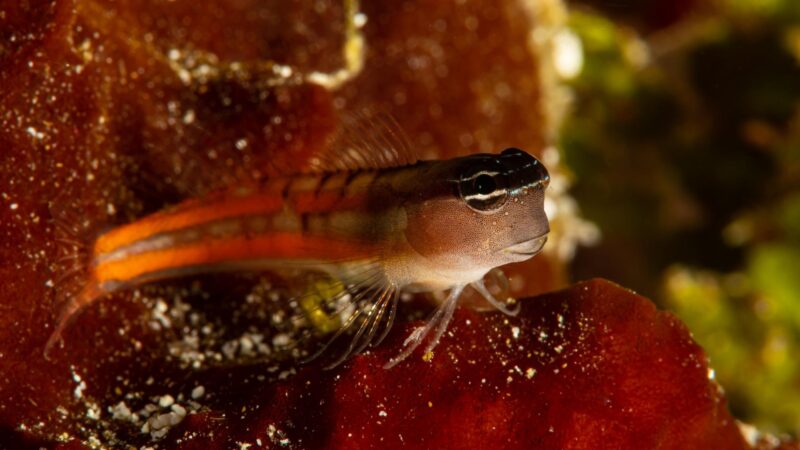
The blenny fish is another animal that eats its young. Research suggests that the male blenny fish is in charge of looking after the eggs. If the male finds that the eggs are too few or are not worth guarding, he will eat them instead. Once the eggs are eaten, he will be ready to court another female blenny fish.
- Scientific Name: Blenniiformes
- Appearance: The blenny fish has a slim and elongated body with a rather pointed head shape. These features make it look like a miniature snake or eel. Fortunately for the blenny fish, it has a pair of large eyes and a big mouth, which makes it look less menacing than snakes.
- Color: Blue, brown, and orange
- Lifespan: 7 to 8 years
- Habitat: Tropical waters
- Height: 3 inches
- Weight: 0.00832 ounces
- Diet: Algae
- Place Of Origin: Northern Africa and Southern Europe
- Characteristics: Long-fish with multiple dorsal fins and pointed nose
Rats
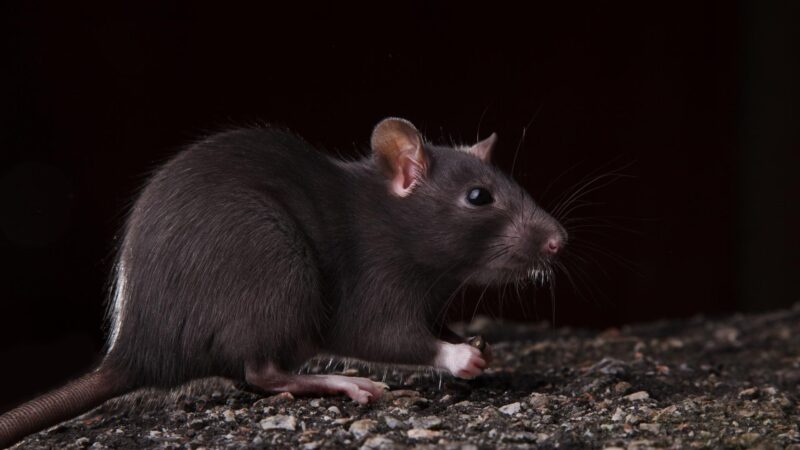
Rats are also known to eat their young. Like most animals on this list, mother rats only resort to eating their offspring when the baby rat seems too ill or is already dead. However, there are also instances when mother rats eat their babies when they are starving after childbirth and no other food source is available.
- Scientific Name: Rattus
- Appearance: Rats have small bodies supported by four narrow legs. It has a pointed head with beady eyes and a pair of large ears perched on top. Rats also have long tails.
- Color: White, gray, brown, or black
- Lifespan: 2 years
- Habitat: Rural or country area
- Height: 2.5 to 4 inches
- Weight: 12 ounces
- Diet: Vegetables, seeds, and grains
- Place Of Origin: Southeast Asia
- Characteristics: Common house pests. Invades people’s home.
Chimpanzees

Chimpanzees are generally herbivorous, but male chimps are observed to attack and kill young chimpanzees. What’s interesting is that they do not kill their offspring – they attack the offspring of another group of chimpanzees. The reason why they do so is still unknown.
- Scientific Name: Pan troglodytes
- Appearance: Chimpanzees have ape-like bodies – with long forearms that can reach their knees. They have bulky bodies covered in brown or black hair. They have a flat face with a pair of large eyes, a wide mouth, and a small nose.
- Color: Brown or black
- Lifespan: 32 to 39 years
- Habitat: Woodlands, grassland, and tropical forests
- Height: 3 to 5.5 feet
- Weight: 70 to 130 pounds
- Diet: Fruits, seeds, nuts, leaves, flowers, and insects
- Place Of Origin: Africa
- Characteristics: Aggressive, territorial
Cats
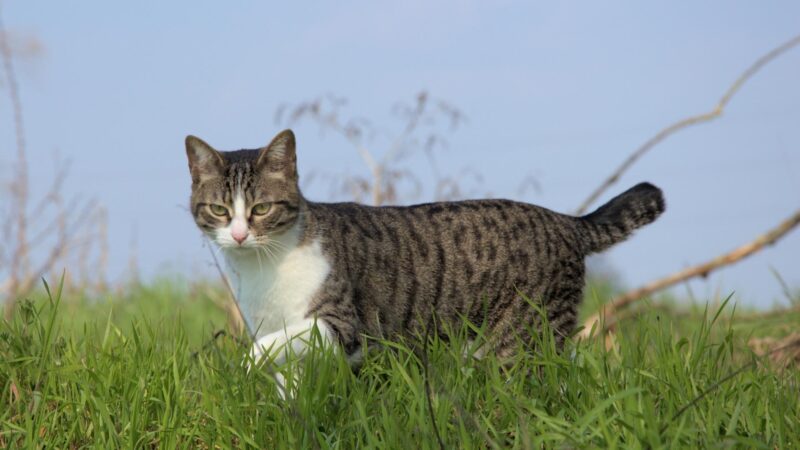
Another animal that eats its young is the cat. Specifically, mother cats eat their young if she finds them unhealthy, ill, or already dead at birth. In some cases, the stress and hunger from giving birth cause them to resort to eating the unhealthy kitten to regain strength. In contrast, the tomcat is usually responsible for taking care of the young kittens.
- Scientific Name: Felis catus
- Appearance: Cats have flexible bodies supported by four agile legs. They are most notable for their large upturned eyes and triangular ears. Depending on the breed, cats may either have long or short fur.
- Color: White, black, yellow, and gray
- Lifespan: 12 to 18 years
- Habitat: Forest, scrubland, swamp, and farmland
- Height: 9 to 11 inches
- Weight: 10 to 20 pounds
- Diet: High-protein carbohydrates
- Place Of Origin: Egypt
- Characteristics: Light-weighted, calm
Polar Bear

There’s no denying that polar bears are dangerous animals. Their hypercarnivorous nature allows them to hunt and feed on their prey with ease. However, during the summer when their primary food source is scarce, male polar bears resort to being cannibalistic and prey on their young.
- Scientific Name: Ursus maritimus
- Appearance: Polar bears have bulky bodies covered in dense white fur. They can be distinguished from other bear species due to their long necks and elongated heads. They also have paddle-like paws and webbed toes, which allows them to hunt in bodies of water.
- Color: White, dirty white
- Lifespan: 25 to 30 years
- Habitat: Arctic regions
- Height: 5 to 9 feet
- Weight: 770 to 1,540 pounds
- Diet: Meat, fish
- Place Of Origin: Arctic
- Characteristics: Aggressive, playful, active, intelligent, curious, solitary
Prairie Dog
Another animal that’s known to attack their young is the prairie dog. However, what’s interesting is that it’s not the mother that attacks her offspring. Instead, it’s usually other adult females within the extended family who resort to cannibalism. The reason for their attacks is still unknown.
- Scientific Name: Cynomys
- Appearance: Despite their names, prairie dogs look nothing like dogs. They have stout bodies covered in fur, which are supported by short furry legs. Prairie dogs have long faces with small rounded ears on top.
- Color: Yellowish
- Lifespan: 3 to 4 years
- Habitat: Grasslands
- Height: 16 inches
- Weight: 2 to 4 pounds
- Diet: Seeds, stems, roots, grasses, weeds, and leaves
- Place Of Origin: North America
- Characteristics: Burrowing, herbivorous, active, playful, diurnal
All things considered, it seems like filial cannibalism is not rare within the animal kingdom. And in most cases, it seems like they only do so for their nutrition or to make sure that only the healthy ones survive the wild. After knowing the reasons why they eat their young, you get to see these animals in a whole new light – and realize that they’re just being good parents.
List of Sources
Matsumoto, Y., et al. (2018). Filial Cannibalism by Male Fish as an Infanticide to Restart Courtship by Self-Regulating Androgen Levels. Current biology.
Putnam, C. (2009). Not So Scary Scorpions. ASU – Ask A Biologist.
Owning a rabbit. (2020). Victoria State Government.
Black-tailed Prairie Dogs. (2021). National Park Service – U.S. Department of the Interior.
Goodall J. (1977). Infant killing and cannibalism in free-living chimpanzees. Folia primatologica; international journal of primatology.
